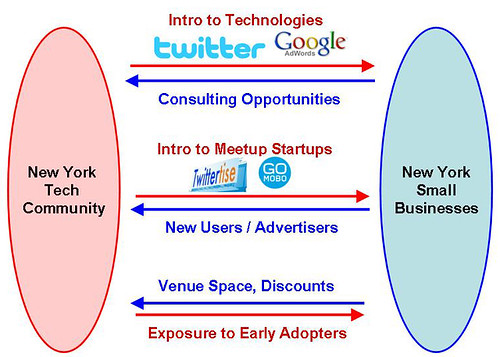When I talk to startups about the benefits of constant, iterative user testing in product design cycles, many people think that cost is a hurdle.
Booking 10 in-person sessions in a rented listening lab with a one-way mirror and screen recording in NYC can get pricey: $100-$200 per *qualified* candidate, plus ~$1000 fixed-cost of lab rental… or, as an even more deluxe option, an all-included engagement with a user testing consultant can run a startup from $5,000 – $15,000. That kind of bill is not feasible when you’re trying to get ramen profitable. But, cost is no excuse for not doing regular user testing in the early stages of a startup. So, for the bootstrapped startups, here’s five inexpensive ways to start doing user testing right now:
1) UserTesting.com – This is a slightly more upscale solution (relative to the other 4 choices below), but for $29 you can get a user to do a 20-min screencast for you while they talk about their thought process outloud. If this sounds confusing, this demo of a screencast explains the value of UserTesting.com well. UserTesting.com has the advantage of providing candidates that are qualified to your specifications (such as: age, sex, social-economic characteristics) and you can have users do very specific tasks you request.
UserTesting.com was developed by an ex-co-worker of mine at Homestead who did some user testing with me on our site’s splash page. He is a sharp guy and great at iterative design, so I’m glad he’s making a tool he finds useful for user testing available to the public.
2) Camcorders and friends – This is perhaps the most economical solution, but also the most time-intensive solution on this list. Schedule family, friends, or even strangers of craigslist to come in and sit down in front of your computer and record their actions performing tasks with a camcorder and some simple consumer-grade screen recording software. It will take time to schedule, prepare, perform and analyze all these tests, but the value of having testers live, in-person is often underestimated. The best benefit of live, in-person testing is the ability to ask follow-up questions when you see users stumble in order to best comprehend their frame of reference and expectations at the time of the incident. If possible, try to get a friend who does not work at your startup to be an independent facilitator. Users are more honest with their feedback when they don’t think they’re talking to someone who works on the site day-to-day. [Update: wow, forget the camcorder. Chris posted in the comments about Silverback, and it looks amazing. Do that instead!]
3) Feedback Army – Get direct answers to questions about your site. This is a far more low-fidelity solution than the first to options, but it’s simple to setup and super cheap. $10 buys you one paragraph of feedback from 10 people. This type of testing won’t help much with usability (ie workflow issues), but FeedbackArmy is helpful in determining how your overall value proposition to users is received and how users self-report their user experience (ie how much they enjoy the site).
4) PickFu – How many times have you gotten into an argument with a developer or product manager over the size/color/iconography of a simple button? End those arguments quickly with evidenced-based experimentation. With PickFu, you can immediately A/B test stuff like images, buttons, wording, etc with 50 peoples opinions for $5. This isn’t for full-blown user testing, it’s more for making quick, one-off, informed decisions. PickFu doesn’t have the benefit of A/B testing directly in the context of your site, but it’s the ability to run A/B tests without the messy overhead of site integration is a reasonable trade-off.
Side Note: Both PickFu and Feedback Army are arbitrages on Amazon Mechanical Turk, so if you’re an MTurk ninja you could do this type of testing even cheaper by scripting MTurk directly. But, for 98% of tasks/purposes you should just pay one of these services to do the work of creating the MTurk HITs for you instead of re-inventing the wheel.
5) Starbucks – Seriously. Go down to your local Starbucks with two experimenters during coffee rush hour. Go to the person at the end of the line and tell them that if they’re willing to sit with you in front of a laptop and do a user testing session for 7 minutes, the other experiment will wait in line and buy you the drink of your choice. The person at the end of the line has nothing better to do than to wait in line, so they’re very likely to say “yes.” And, a $5 latte for 7 minutes of genuine in-person user testing is a bargain.
Another advantage of the three virtual solutions mentioned above (FeedbackArmy, UserTesting.com, and PickFu) is that they save you time too. Live user testing in-person takes time in preparation, executing the tests, and then creating actionable conclusions and analysis. All these virtual solutions significantly cuts down or eliminates these time requirements. Of course, you sacrifice impactfulness by not doing a lot of this work yourself, but oftentimes this trade-off is appropriate.
I’m sure I missed other useful software and web services, so please add your favorite ways to bootstrap user testing in the comments. So, stop reading blogs and go user test your site.
 Vinicius Vacanti is co-founder and CEO of Yipit. Next posts on how to acquire users for free and how to raise a Series A. Don’t miss them by
Vinicius Vacanti is co-founder and CEO of Yipit. Next posts on how to acquire users for free and how to raise a Series A. Don’t miss them by 
 Warning: I’m pretty sure this is wrong — potentially legally, but certainly ethically.
Warning: I’m pretty sure this is wrong — potentially legally, but certainly ethically.







